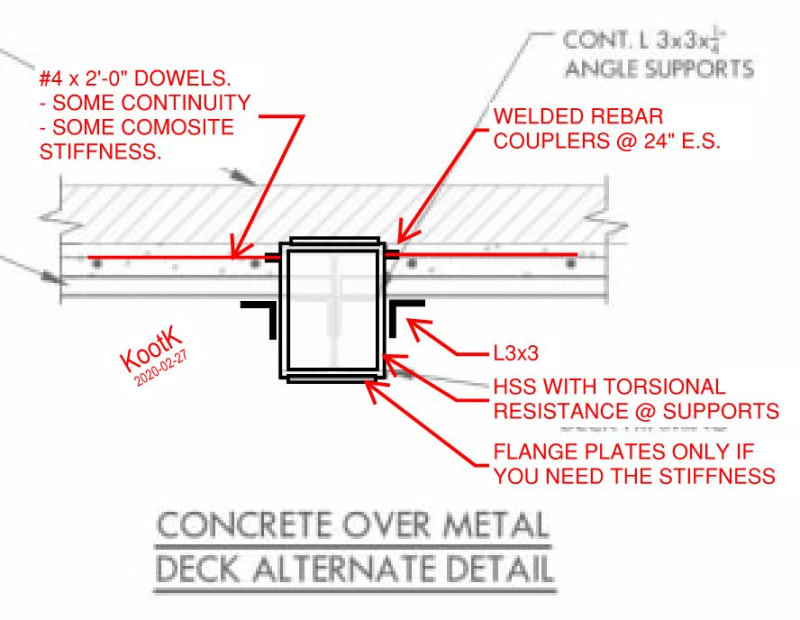Hi All,
I am working on a large custom residence where the floor system is concrete metal deck system with all steel framing. The architect wants to reduce the depth of the floor system, so instead of the deck running continuous over the top of the beams, they want the the concrete metal deck to be inset into the depth of the wide flange beam, so that top of concrete is flush with top of the wide flange.
Please see attached sketch.

Do you forsee any issues with this type of system?
I know that all of the deck spans will be single span, so that reduces the effectiveness of the floor system. Also, with all of the decks designed as simple spans, so they will likely be some sort of cracking in the finish located above the steel beam.
Thanks.
I am working on a large custom residence where the floor system is concrete metal deck system with all steel framing. The architect wants to reduce the depth of the floor system, so instead of the deck running continuous over the top of the beams, they want the the concrete metal deck to be inset into the depth of the wide flange beam, so that top of concrete is flush with top of the wide flange.
Please see attached sketch.

Do you forsee any issues with this type of system?
I know that all of the deck spans will be single span, so that reduces the effectiveness of the floor system. Also, with all of the decks designed as simple spans, so they will likely be some sort of cracking in the finish located above the steel beam.
Thanks.

